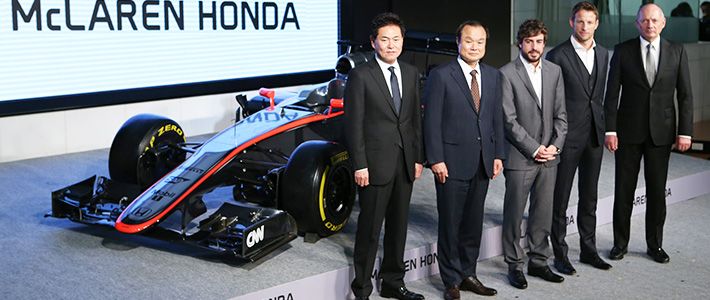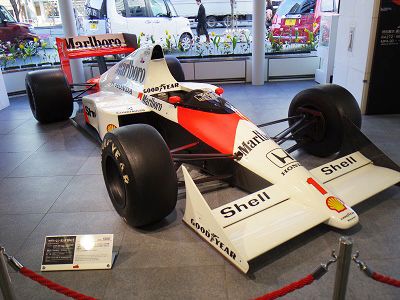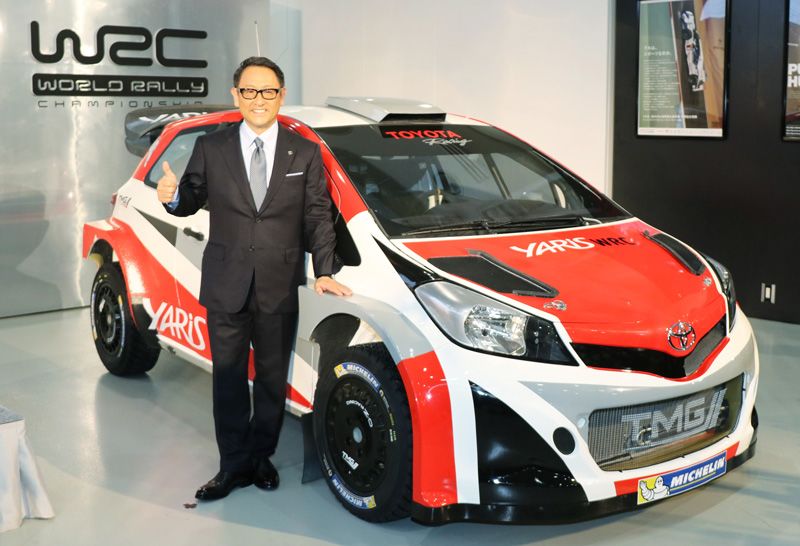
Honda Comes Home to F1: A Return to Racing for Japan’s Automakers
Economy Society- English
- 日本語
- 简体字
- 繁體字
- Français
- Español
- العربية
- Русский
Japanese manufacturers are again training their sights on international car racing. This year Honda Motor marked its return to Formula One after a seven-year absence from the sport’s premier circuit, and Nissan Motor is heading back to the 24 Hours of Le Mans. For manufacturers, the decision to again contend for racing’s top titles represents the final means for surviving in the increasingly competitive car market.
Honda’s Fourth F1 Challenge
Honda Motor founder Honda Sōichirō famously stated that “racing improves the breed,” and the company has long looked to motorsports as a means to push the brand forward.
In 1961, Honda enjoyed a string of victories at motorcycle events, including the prestigious International Isle of Man Tourist Trophy race. After the company began manufacturing cars in 1963 the founder set his sights on F1. The manufacturer finished a dismal thirteenth in its 1964 F1 debut at the German Grand Prix. But just the following year, it tasted victory for the first time by taking the checkered flag at the Mexican GP. Honda eventually bowed out of its inaugural F1 run at the end of the 1968 season, stating it was shifting resources toward developing a cleaner mass-market engine.
This most recent foray into the realm of Formula One is Honda’s fourth. The manufacturer enjoyed its golden age of F1 racing when it partnered with McLaren during its second run, winning 44 races in a period stretching from 1983 to 1992. The pinnacle season for McLaren-Honda came in 1988 when legendary drivers Ayrton Senna and Alain Prost combined to capture all but one of the circuit’s 16 titles.
 The McLaren-Honda MP4/5 that Ayrton Senna drove to victory at the 1989 Mexican Grand Prix.
The McLaren-Honda MP4/5 that Ayrton Senna drove to victory at the 1989 Mexican Grand Prix.
Honda’s much anticipated return has gotten off to a lackluster start. Only one of the team’s two cars was able to make it to the starting line for the season opening Australian Grand Prix, finishing last and two laps behind the one-two finish of the dominant Mercedes-AMG team. The results at the following Malaysian GP were worse, with both cars retiring early.
The manufacturer remains unfazed by its poor showing, saying that the results are to be expected as the team works to catch up with competitors who have been perfecting their machines since the introduction of new regulations last year. Driver Jenson Button was upbeat after the Australian GP, saying, “We gathered a lot of useful data and will concentrate on further refining the car.” The positive tone was echoed by teammate Fernando Alonso, who, following the Malaysian GP, said the decision to retire was made to protect the machine and insisted that progress is made each time the car is run. Needless to say, fans hope they will not have to wait too long for McLaren-Honda to return to its former glory.
Nissan Returns to Le Mans
The last time Nissan participated in endurance racing’s prestigious 24 Hours of Le Mans was 16 years ago, in 1999. The manufacturer will compete in the top Le Mans Prototype 1 category with a car featuring a rarely used front-engine, front-wheel-drive design, pitting its technical skills against established teams from Toyota Motor, Audi, and Porsche.
Unlike F1, which has moved toward standardizing engine size, Le Mans allows teams a wide range of freedom to develop cars. Nissan and other competitors in the LMP1 category have been working on a broad range of ideas in response to new regulations introduced in 2014. The new rules, which are aimed at making endurance racing more relevant to production cars, require machines to carry energy recovery systems and also remove capacity limitations for hybrid engines.
Another Japanese automaker plotting an eventual comeback to Le Mans is Mazda Motor. In 1991 it became the only Japanese manufacturer to win the endurance grand prix. Since 2013 it has supplied a turbocharged diesel engine exclusively developed with its Skyactiv technology to a team competing in the lower LMP2 category.
Heading off road, Toyota announced it was returning to the World Rally Championship after an 18-year hiatus. The WRC provides a unique opportunity to manufacturers as cars are based on commercial models and must be engineered to respond to a wide range of race conditions. Toyota is hopeful that the technology it develops will drive production and sales for the brand. The company plans to join the circuit for the 2017 season with a machine centered on its European subcompact Yaris model. From 1973 to 1999 the automaker regularly earned trips to the winners circle, chalking up 43 wins and three overall championships.
 Toyota president Toyoda Akio stands in front of the company’s Yaris WRC model on January 29, 2015. (© Jiji)
Toyota president Toyoda Akio stands in front of the company’s Yaris WRC model on January 29, 2015. (© Jiji)
Regulations with an Eye to Driving Development
Participating in motorsports requires huge sums of money. For F1, over ¥40 billion annually is required for team operations, including engine development. Honda’s decision to rejoin the circuit wasn’t easy as it comes in the face of financial woes stemming from a spate of recalls and other developments. But the automaker was motivated by the understanding that the new technologies it creates in racing will be essential to its survival in the car market down the road.
The key factor drawing Honda back to formula racing has been new regulations introduced by the International Automobile Federation, the general governing body for F1 and other racing series. Since 2014 the FIA has been fostering an environment where technologies developed in racing can be applied directly to the development of commercially produced cars. Major aspects of this have been a switch from large 2.4 liter engines to smaller 1.6 liter turbocharged ones, and the introduction of kinetic energy recovery systems that apply heat captured from the engine and brakes toward acceleration.
Honda’s participation in F1 allows it to try its hand at building a powerful, environmentally friendly hybrid engine. However, from the standpoint of survival, it is doubtful whether the carmaker had any choice but to return to racing.
The decision by Honda and other Japanese manufacturers is made all the more acute amid a move by European automakers over the last decade toward diesel-powered engines. The introduction of the injection pump in the 1990s opened the way for the development of cleaner and quieter diesel cars, which are more efficient and get better mileage than gasoline vehicles. According to the European Automobile Manufacturers’ Association, over half of all new cars sold in EU countries in 2014 featured diesel engines.
A Race for Survival
The development of new, cutting-edge materials plays an essential part in the race to make vehicles lighter and more efficient. For F1, carbon fiber has long been utilized in chassis since it has one-fourth the weight, ten times the strength, and seven times the tensile elasticity of steel. Carbon fiber monocoque shells surrounding cockpits of cars have become essential safety components for protecting the lives of drivers.
While F1 has proved the versatility of carbon fiber technology, high material costs have prevented its utilization in the commercial car market. However, German carmaker BMW broke new ground in 2013 by using the material in its i3 series of electric vehicles.
Automakers are increasingly being expected to produce cars that are not only fast and powerful, but efficient and environmentally friendly. For Japanese manufacturers this has meant a return to the test bed of motorsports and the start of a race for market survival.
(Article originally written in Japanese by Nagasawa Takaaki. Banner Photo: Heads of the McLaren-Honda F1 project stand in front of the team’s new machine in Tokyo on February 10, 2015: (from left to right): project leader Arai Yasuhisa, Honda president Itō Takanobu, team drivers Fernando Alonso and Jenson Button, and McLaren Group CEO Ron Dennis. © Jiji)
carbon fiber reinforced plastic CFRP Honda Motor Car racing F1 Formula One Toyota Motor World Rally Championship